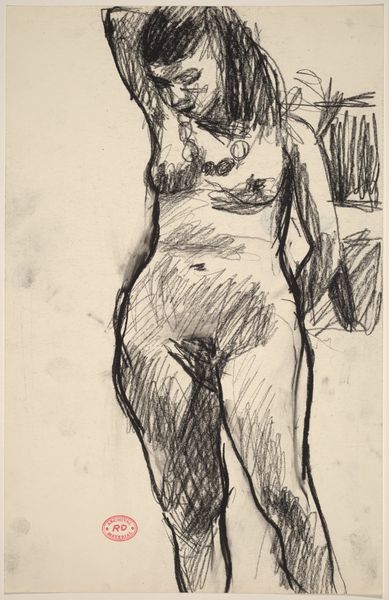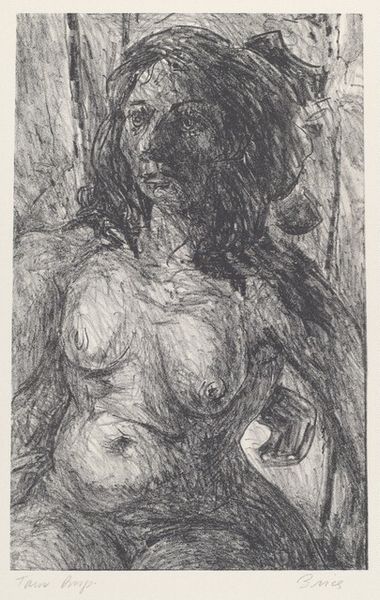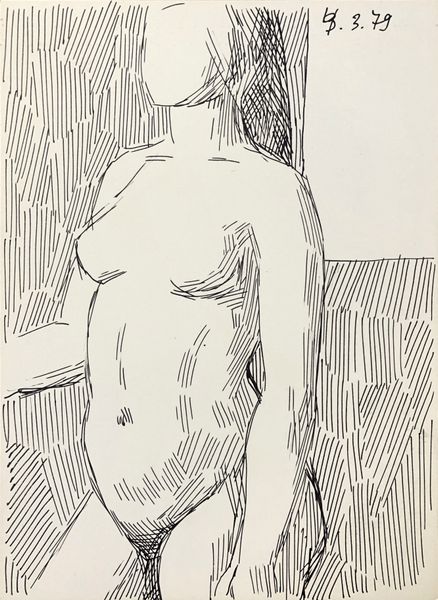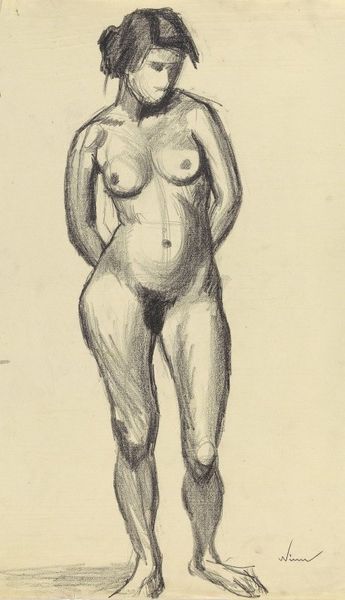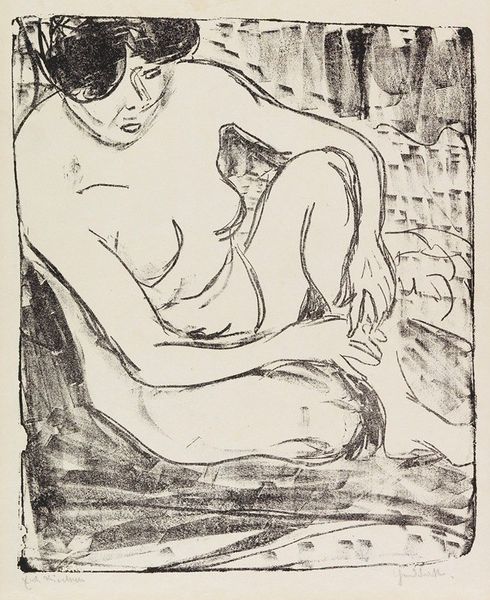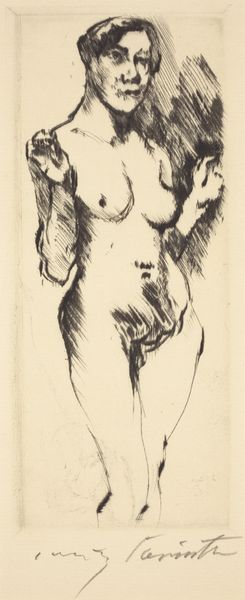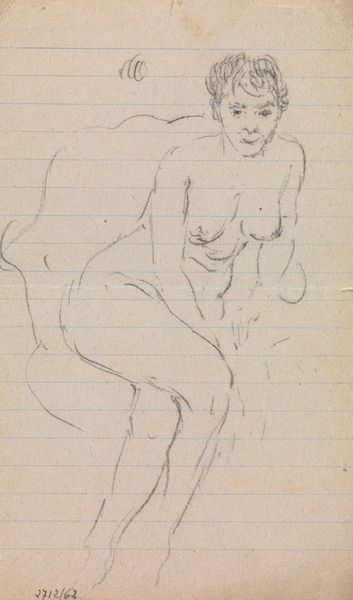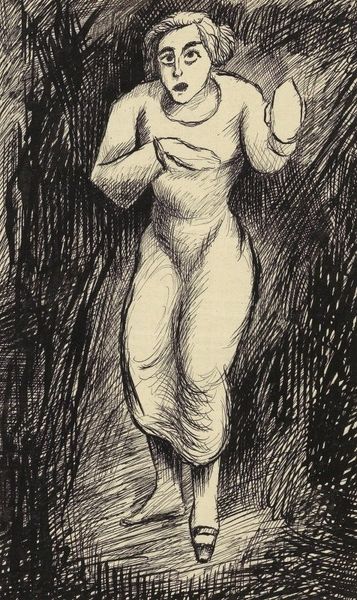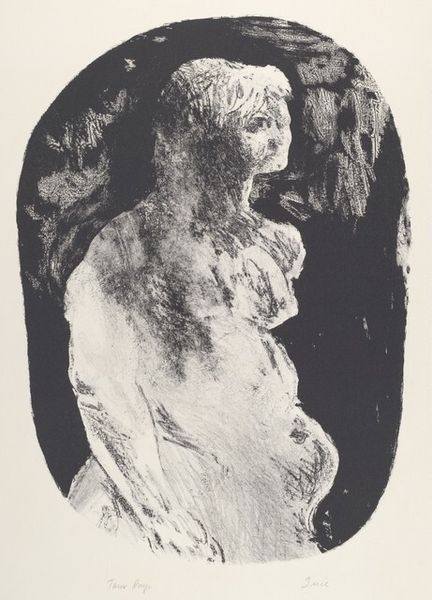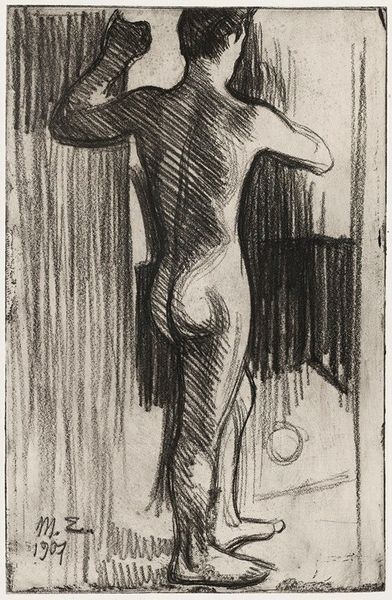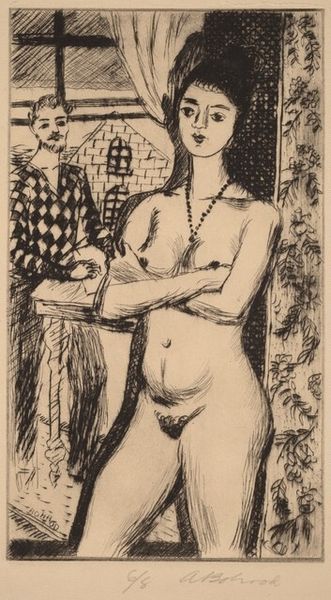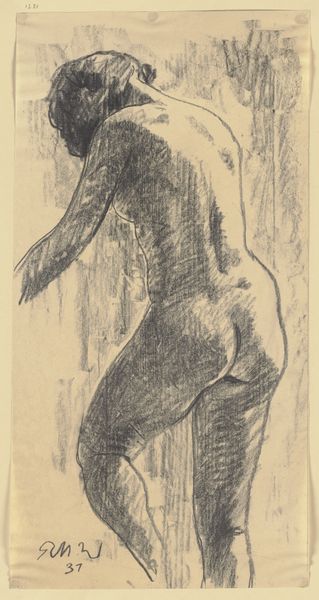
drawing, ink
#
portrait
#
drawing
#
pen sketch
#
figuration
#
ink
#
academic-art
#
nude
Copyright: Public Domain: Artvee
Curator: Here we have Cyprián Majerník's ink drawing, "Female Nude," created in the 1930s. It’s a very direct and immediate sketch. Editor: My initial impression is one of tentative vulnerability. The lines are scratchy and hurried, but the pose—her arm shielding her face—suggests a shyness. Curator: It's interesting that you say "vulnerability," because nudes, throughout art history, often serve as representations of ideal beauty, rather than real people with inner lives. I wonder if this was presented as something scandalous at the time it was made? How might it have affected its public viewing? Editor: I think the way Majerník renders the human form adds a psychological layer. Her hair appears windswept, almost Medusa-like, suggesting inner turmoil rather than serenity. Notice the contrast between the defined rendering of her body and the ambiguity in her gesture with that raised hand; to me, it reads as self-protection, maybe an echo of societal judgments imposed on female sexuality. Curator: The artist was part of a wave of interwar artists who turned toward modern art trends. There's an economy to Majerník’s lines; it suggests something unfinished or ephemeral, maybe a commentary on fleeting encounters with the body as an object of gaze. Editor: Those hatching strokes—they feel so rushed. And the stylized flowers visible by her legs—a traditional symbol of femininity—seem almost caged, constrained by rigid, vertical bars. Is that her psychological state being externalized, perhaps? Or does this image speak more broadly of the constraints put upon women's artistic expression or simply autonomy at this time? Curator: It raises more questions than it answers, and that's partly due to the historical moment, where academic and avant-garde modes are mixing uneasily. The art market in Slovakia at the time was pretty small, and artistic innovation might not have had an eager reception by broader audiences. It is intriguing to imagine what he was thinking at the time of the production of the sketch, in consideration of the audiences he wanted to approach, if any. Editor: This piece speaks volumes about the shifting perceptions of female representation in the arts during that interwar period. Curator: I concur! It pushes the envelope and helps viewers grapple with the idea of beauty.
Comments
No comments
Be the first to comment and join the conversation on the ultimate creative platform.
